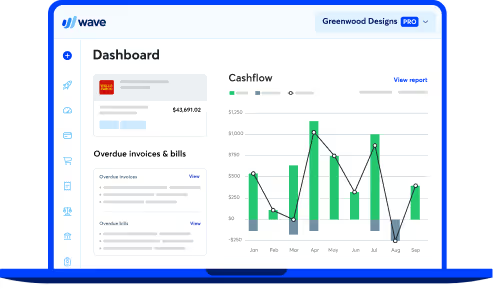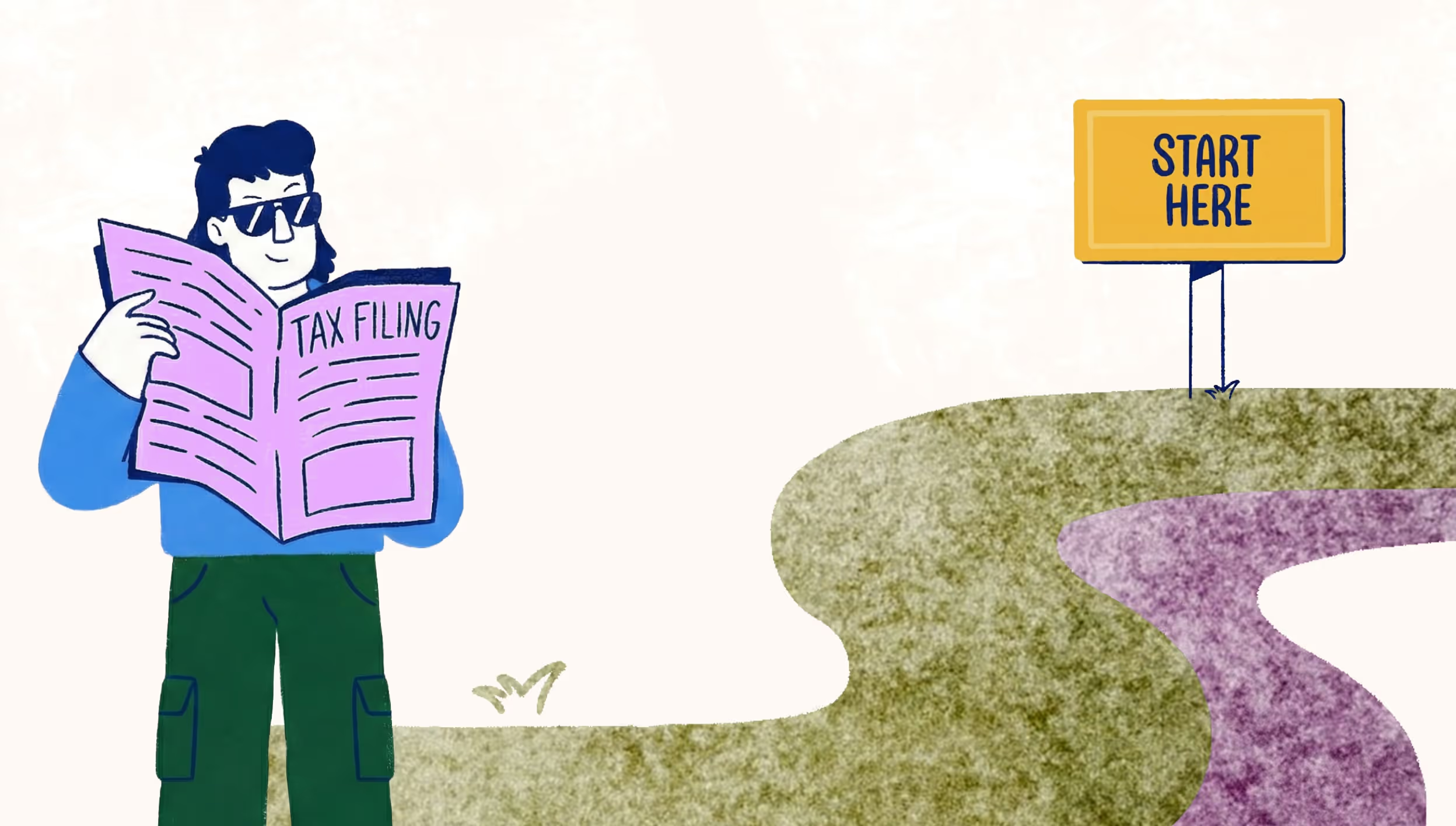
Chart of accounts: What it is and how it works
If you’re wondering what a chart of accounts is, and if your business needs it, you’ve come to the right place. In this article, we’ll outline its definition, how it works, and how it’s structured, as well as answer why it’s so important for businesses of all sizes—your’s included.
Before we jump in, here’s a TLDR:
- A chart of accounts is like a table of contents that organizes transactions through accounts to keep your finances organized and easily accessible.
- There are typically five main accounts in a chart of accounts: assets, liabilities, equity, revenue, and expenses.
- There is no standard structure to forming a chart of accounts, but it is important to keep your structure consistent year-over-year.
- A chart of accounts is not mandatory for businesses, but it is necessary if you want to be able to have quick access to your transaction details.
Now that we've got the basics down, let’s get into details.
What is a chart of accounts?
A chart of accounts (also called a COA) is a tool in accounting that acts as an index of every financial account in a company’s general ledger (aka your record keeping system). It lists all of a business’s financial transactions during an accounting cycle, and is done so by category and line item.
In the list, it’s typical to see account names and their associated codes, details, and balances. Depending on how your chart of accounts is organized and if you’re using accounting software, you also may be able to view detailed transactions under each account.
How does a chart of accounts work?
A chart of accounts works by clearly organizing financial transactions so that interested parties, like the business owner or investors, are able to get a clearer understanding of a business’s health.
Think of it like a table of contents. It points you to where you need to go to see certain line items, like accounts payable, sales, costs and expenses, and more.
How is a chart of accounts structured?
A chart of accounts displays the information from the financial statements that feed into it. Typically, the balance sheet accounts appear first, and are then followed by accounts in the business's income statement—usually about five: assets, liabilities, equity, revenue, and expenses.
There primary accounts that can be further broken down into sub-accounts. The more detailed you go, the easier it is for interested parties to get the information they need to assess the health of your business.
Depending on the size and structure of your business, you can also organize your chart of accounts by business function or by departments.
What accounts are within a COA?
Back to those primary accounts.
Together, the first three (assets, liabilities, and equity) generate the balance sheet. This is what illustrates the health of your business, and whether or not it owes any money.
Next up is revenue and expenses. These create your business’s income statement, helping to show your profitability over time.
Here’s a detailed breakdown of each:
Assets
Assets are any resource that your business owns that provides value. Cash is an asset, as well as things like equipment, owned company vehicles, inventory you’ve purchased, and accounts receivable.
Liabilities
Liabilities are what your company owes. Essentially, your debts. These may be taxes, accounts payable, or any business loans.
Equity
After you take away your liabilities from your assets, you’ll be left with equity. Equity accounts can look like stock and retained earnings.
Revenue
This is what your business brings in from your goods or services. Revenue can be through sales or operations or interest revenue.
Expenses
This is what you spend in order to generate revenue. This can include payroll, marketing, rent, and more. When calculating your business’s net income, you’ll subtract expenses from revenue.
Chart of accounts numbering
Each account in your COA will be numbered in a way that’s easily identifiable. You’ll want your accountants and other interested parties to be able identify the type of account by its first digit.
For example, assets can be numbered 100 to 199, and liabilities could be numbered 200 to 299. The exact number will depend on the size of your business.
Chart of accounts (COA) example
Chart of accounts come in all shapes and sizes, but here’s one example using the structure noted above:

Why is a chart of accounts important for small businesses?
As a small business owner, you do a lot. And that includes spending and, of course, tracking. Your chart of accounts is a way to organize all of these transactions, and generate important documents—like balance sheets and income statements—from it.
Once your transactions are organized, filed, and accessible, you can get a much better sense of how your business is doing today so you can plan how to build on your success in the future.
How to make a chart of accounts
While there’s no standard format to making a chart of accounts, you can follow the guidelines we noted above:
- Index each account with a number that’s easily identifiable
- Ensure that accounts are categorized by these numbers (example: assets from 100-199 and your list of liabilities from 200-299).
You’ll also want to use the same format each accounting cycle, so when it comes time to compare your data, you're comparing apples to apples.
Accounting software, like Wave’s, can help with that. Not only will it keep things consistent, but it helps you with the heavy-lifting. That means no manual spreadsheets and zero worry of losing track of what comes after Item 4597 under your expenses.
Chart of accounts FAQs
Can you delete old accounts from a COA?
You can delete old accounts from a COA, but it’s recommended to wait until the end of the year to do so. When you delete old accounts, merge, or rename them, tax season can get messy. That said, don’t worry about adding accounts. Doing so does not impact the organization of your records.
Chart of accounts vs. general ledger: What's the difference?
A chart of accounts and a general ledger are both critical components in accounting systems, but have their differences. In short, a chart of accounts is an indexed list of accounts in a business, whereas a general ledger is a record of the transactions in each account.
Is there a standard chart of accounts structure?
Nope! There is no standard chart of accounts structure. However, there are some best practices. These include keeping consistency and conciseness. Keep your structure the same throughout accounting cycles and don’t go too far into the weeds when it comes to recording. It’s okay to merge certain items together—they don’t need their own individual accounts.
What are account identifiers?
Account identifiers are codes that make it simple for readers to find accounts and understand what they’re reviewing. In addition to numbers, account identifies include brief descriptions for the account types. This is important because a chart of accounts can include many different line items—sometimes even hundreds in just one primary account.
Is a chart of accounts (COA) required?
No, a chart of accounts is not required for businesses… but it is necessary if you want to keep your transactions organized and categorized in a way that’s easily accessible when you need them.
(and create unique links with checkouts)
*While subscribed to Wave’s Pro Plan, get 2.9% + $0 (Visa, Mastercard, Discover) and 3.4% + $0 (Amex) per transaction for the first 10 transactions of each month of your subscription, then 2.9% + $0.60 (Visa, Mastercard, Discover) and 3.4% + $0.60 (Amex) per transaction. Discover processing is only available to US customers. See full terms and conditions for the US and Canada. See Wave’s Terms of Service for more information.
The information and tips shared on this blog are meant to be used as learning and personal development tools as you launch, run and grow your business. While a good place to start, these articles should not take the place of personalized advice from professionals. As our lawyers would say: “All content on Wave’s blog is intended for informational purposes only. It should not be considered legal or financial advice.” Additionally, Wave is the legal copyright holder of all materials on the blog, and others cannot re-use or publish it without our written consent.


























